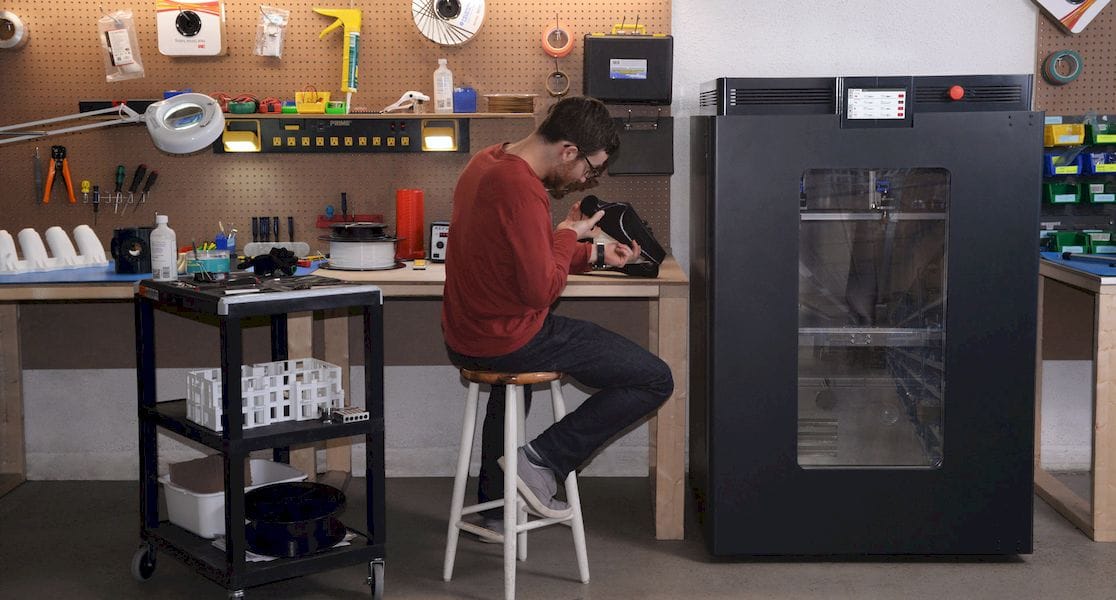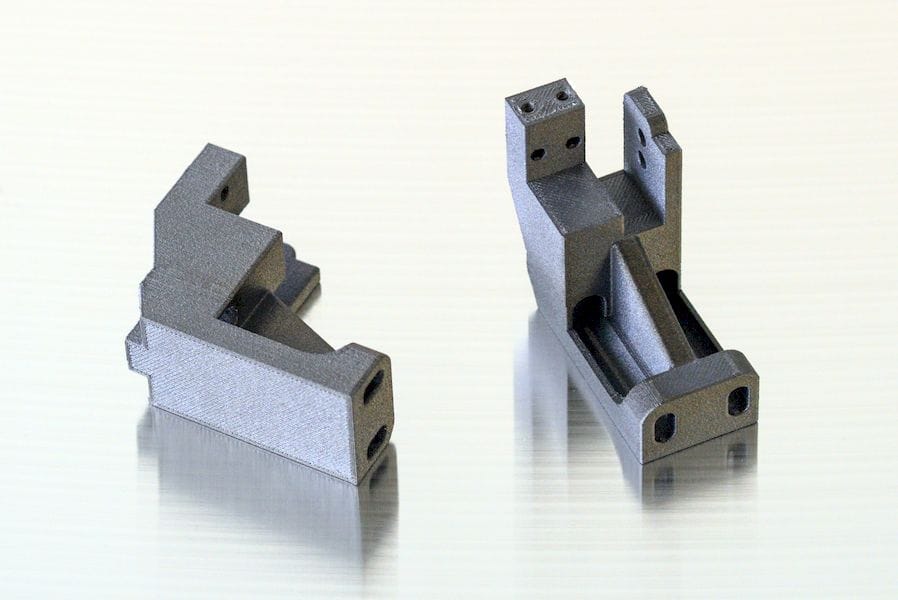
AON3D is a Montreal-based company manufacturing an incredible industrial 3D printer.
This massive machine – with a 457 x 457 x 635mm build volume, is able to handle a large range of engineering materials. We spoke with co-founder Randeep Singh to find out more.
Fabbaloo: What’s the history of the company? Why was it started? What is your goal?
Randeep Singh: AON3D was founded in 2015, by a team of materials engineers.
After using consumer 3D printing solutions as part of a contract manufacturing firm we were running, it became clear how limited the applications of most consumer-grade materials were. We had customers asking us to build things for them, and consumer 3D printers just weren’t capable of meeting this challenge. Given that the next step up was a Stratasys machine, we ended up designing our own printer for internal use. Customers found out about these units and asked to buy them, and that’s when we realized there was a bigger market here.
Our vision is to bring high-quality plastics to 3D printing, so that people can build end-use components. The amount of design flexibility that this enables is huge.
3D printing has been way too expensive for too long – we’re imagining a world where regular businesses can have access to the same quality of tools as the Fortune 500.
Fabbaloo: Who is involved in AON3D? How big are you now?
Randeep Singh: AON3D was founded by a team of 3 materials engineers from McGill university – Kevin Han, Randeep Singh, and Andrew Walker.
We’re now a team of 17 people, with a variety of backgrounds including: mechanical & software engineering, manufacturing operations, research and sales. We also run our own manufacturing in-house, and have a production team with backgrounds in aerospace manufacturing.
Fabbaloo: Do you have any external investment or advisors?
Randeep Singh: We do – but we’ve been keeping that under-wraps for now. This is something we’d like to announce in the near future when everything is finalized.
Fabbaloo: When is the machine launched? When will it ship?
Randeep Singh: The machine was soft-launched for the past couple months, and is being officially announced to the public now. Units are starting to ship this week.
We currently have 40 beta customers who have purchased AON-M2’s including several notable companies everyone would recognize.
Fabbaloo: What is the cost of the machine?
Randeep Singh: The machine is listed at $29,950 USD. We also offer materials, onboarding, consulting and other services to customers that need it.

Fabbaloo: Do you have partnerships with any materials suppliers?
Randeep Singh: We have partnerships with almost all the major chemical suppliers (i.e. Solvay). We’re also working with Essentium materials on a few things, including their FlashFuse™ technology (we’re one of their launch partners).
We also have a relationship with 3DXTech, who supply our Ultem™ filaments, as well as a few other specialty polymers.

Fabbaloo: Where are you selling the machine?
Randeep Singh: The machines are available globally – we ship them from our Montreal manufacturing facility. We have customers on every continent except Antarctica, and have shipped to over 10 countries.
Fabbaloo: Who is selling your machine? Resellers? Looking for resellers? Direct sales? Partnerships?
Randeep Singh: Right now, it’s direct sales through us.
We’re about to launch some resellers in the US & in Europe, but are actively looking for partners to help serve customers locally.

Fabbaloo: Is the chamber explicitly heated or just residual heat from the bed?
Randeep Singh: The chamber is actively heated – it’s got 2150 watts of chamber heating. It can sustain temps of over 120C, which is how we can print with materials like PEEK. A higher chamber temp significantly enhances layer bonding (leading to part strength), as well as decreases the tendency of parts to warp via controlling residual stresses.
We’ve seen a bunch of printers claim compatibility with PEEK & Ultem & Polycarbonate, but given the high glass transition temps of these polymers, it’s unclear to what quality level the parts will be.
On most of these other solutions, the max chamber temps average out at around 80-90C (rated max temps).
The bed itself can hit over 200C.
Via AON3D

